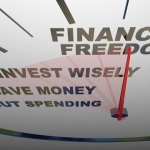Home > Retirement > Short-termism and Constant Expected Investment Returns
Short-termism and Constant Expected Investment Returns
 Individuals have come to believe that they should expect 10% returns. Why shouldn’t they, given the recent strong returns over the last 5 years? Nonetheless, investment returns of the stock or bond market are anything but constant.
Individuals have come to believe that they should expect 10% returns. Why shouldn’t they, given the recent strong returns over the last 5 years? Nonetheless, investment returns of the stock or bond market are anything but constant.
Additionally, predicting for more than a year is difficult for most people. Regrettably, valuations do not tell us much about what will happen in a week, month, quarter or in a few years. However, valuations can tell us the expected investment returns over 10, 15, and 20 year periods with a certainty of 70%.
As Inker and Tarlie indicate, (reference my two previous articles, The 401k Retirement Challenge and Static and Target Date Funds – a Curse on the Industry)
And to go beyond a static glide path and account for time-varying expected returns (see the section on Dynamic Allocation), it is essential to have a framework that naturally balances the changing trade- offs between risk and return as investors age.
The industry, and especially 401k providers, seem to think investing more aggressively at a young age and reducing stock exposure is the way to go. With the belief being that once in retirement that any short term losses are not recoverable.
On the other hand, there is also the risk that one does not have enough wealth to get them through retirement or will not benefit from strong up cycles if they have 10 or 20 years of expected life when valuations are low. Therefore, there is a risk of not having enough wealth in retirement. Looking to the consumption phase of retirement is just as important as the accumulation phase.
Wealth and Returns
One of the strongest points Inker and Tarlie make is to have investors focus on wealth rather than returns. This is no small feat. With CNBC, and the press blaring what returns are, it is hard to have clients turn the other way.
They specifically state that:
We believe that the right way to build portfolios for retirement is to focus on how much wealth is needed and when it is needed, with a focus not on maximizing expected wealth, but on minimizing the expected shortfall of wealth from what is needed in retirement.
This suggests that 401k investors take a different course. The premise is to focus on the wealth needed to get to the desired goal. Note that this does not discuss returns, or benchmarks.
- Determine how much you want/need (i.e. an investor thinks she needs $50,000 a year in retirement.)
- Then determine what value you will need in your portfolio to achieve that income. $800,000 at a 5% constant withdrawal rate.
- How much do you need to save and contribute to the portfolio to reach this goal?
- Design a Dynamic portfolio to accomplish the expected goal.
- Review the portfolio annually. Look at where you currently are versus the progression to the goal. Draw a line. Glide a path to get to that goal with reasonable expectations. Why we are above or below that line and what are you going to do to continue to stay, or get above that line.
For those individuals that are lucky enough to have lived, accumulated and retired at the right age, it does not matter what allocations you have. However, for those entering retirement in and around 1965, or in the recent 10 years, the risk of running out of money in retirement is much greater.
As an individual investing in a 401k, there are many things you can do to ensure that you get to a healthy retirement: saving more, working longer, and certainly using a Dynamic portfolio that relates more to wealth rather than to what was the hot investment last year.
To learn more about James Cornehlsen, view his Paladin Registry profile.
Other posts from James Cornehlsen
More Republican Presidential Candidates than Retirement Opportunities?
The title of this article is not quite true, but close. With 15 candidates in place for the...
Automated Investment Tools – Are They Landing in Your Back Yard?
Automated investment tools, or Robo-advisors as they are commonly known, are not aliens or robots landing in your...
Can You Reach Your Financial Goals for Retirement?
I was taught by my coach, Jack Beatty, to reach one’s goals generally involves having a person to...





